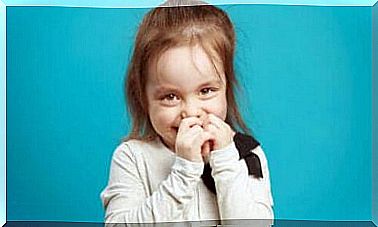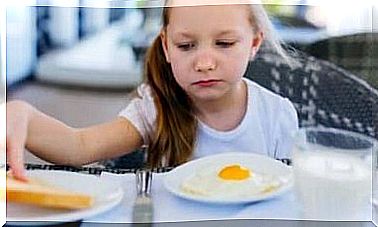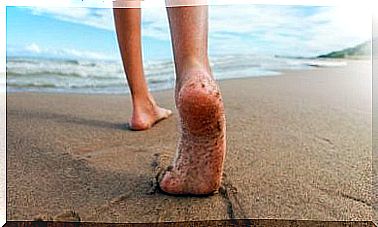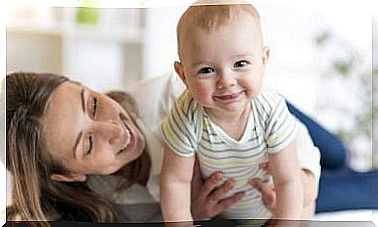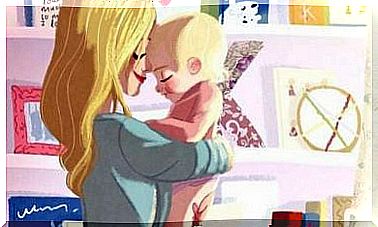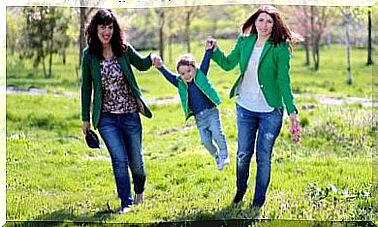Why Do Children Imitate What They See?

Children have a great ability to imitate what they observe. A few hours after birth they begin to imitate the gestures of the adults around them. For example, if the mother sticks out her tongue, the infant successfully mimics it by performing the same behavior it observed. But why do children imitate everything they see? What is the reason for this behavior?
Through imitation, children acquire the ability to exercise their possibilities of expression and, if we go further, we can appreciate their way of seeing themselves as acting beings.
We could say that the child begins to experience the coincidence of what he perceives with his behavior. This conclusion is in agreement with Meltzoff’s theory of simulation (Meltzoff, 2007; Meltzoff & Moore, 1977).
When newborns are between 12 and 21 days of age, they are capable of imitating facial and hand gestures. This imitation implies that infants can equate their behaviors with the gestures they see others perform. Next, we will show you a study that tells us when children start imitating what they see.
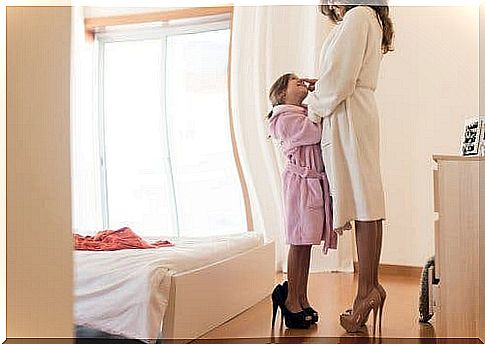
Babies mimic the facial gestures of adults
In a study conducted by Meltzoff and Moore, the ability of newborns, aged between 0.7 and 72 hours, was evaluated to mimic two facial gestures of adults: mouth opening and tongue protrusion. (stick out tongue). The infants were placed in a dimly lit room and infrared sensitive video equipment was used.
An uninformed observer of the gestures shown to the newborns classified the videos. Both the frequency and duration of mouth opening and tongue protrusion were taken into consideration. The results showed that infants can mimic both gestures made by adults.
This study suggests that, probably, at the base of this imitative behavior there are three possible mechanisms: instrumental or associative learning, innate release mechanisms, active intermodal coupling, i.e. the ability to recognize stimuli initially encoded in a sensory modality through a modality different (for example, touching without seeing or seeing without touching).
Children imitate what they see, what are these behaviors due to?
Children mimic what they see and this happens thanks to mirror neurons. Mirror neurons, discovered by Giacomo Rizzolatti, are a particular type of neurons owned by humans that are activated when a person performs an action, but also when an individual observes an action performed by another person. Mirror neurons are part of a neural network system that enables execution-intention-emotion perception.

When we pause to observe a person, the simple movement of his hand, foot or mouth activates the same specific regions of the motor cortex in us. It is as if the observer is making those same movements. This process goes beyond the simple observation of movement which, when observed, generates a similar latent movement in the observer.
As the theory of mind explains, the system integrates the attribution / perception of the intentions of others into its neural circuits. Interpersonal understanding and action are based on what we understand about the intentions and motivations of other people’s behaviors. To achieve this, neural circuits subliminally simulate the actions we observe, allowing us to identify with others.
In this sense, the doer and the observer are in very similar neural states. It is as if they are doing the same actions with the same intentions or feeling the same emotions.
We are social beings and our survival depends on understanding the intentions and emotions displayed by the manifest behaviors of others. Mirror neurons allow us to understand the thinking of our peers not through conceptual reasoning, but directly, through sensations and without having to think.
Conclusions
Mirror neuron systems allow the learning of gestures through imitation. And so we can smile, walk, talk, dance, play football, etc. Furthermore, we can also feel like we are falling when we see someone else falling to the ground, feel pain when someone cries, or feel joy when someone is happy.

